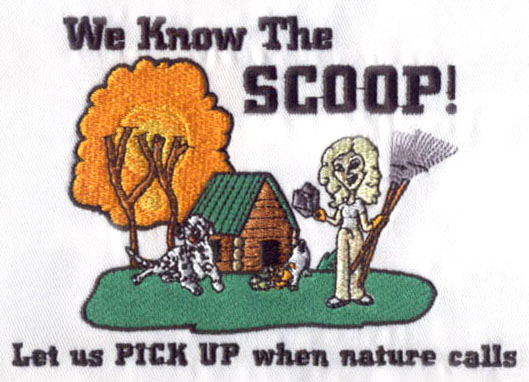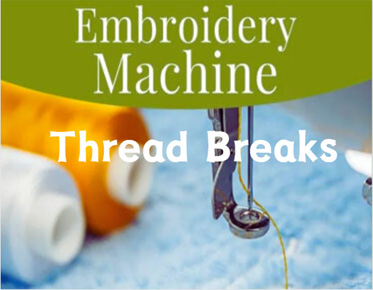Mastering the Basics: Top Embroidery Stitches for Beginners
Embroidery is a timeless craft that allows individuals to create beautiful and intricate designs using just a needle, thread, and fabric. Whether you're looking to embellish clothing, personalize home decor, or simply explore your creative side, embroidery offers endless possibilities for expression. If you're new to embroidery, mastering a few basic stitches is the perfect place to start. In this blog, we'll introduce you to the top embroidery stitches for beginners, providing step-by-step instructions and tips to help you get started on your embroidery journey.
1. Back Stitch
The back stitch is a versatile stitch commonly used for outlining shapes and adding fine details to embroidery designs. To create a back stitch, bring the needle up through the fabric at the starting point of your design. Then, insert the needle back into the fabric a short distance away and bring it up again slightly behind the first stitch. Continue stitching in this manner, keeping your stitches evenly spaced and consistent in length.
2. Running Stitch
The running stitch is one of the simplest and most basic embroidery stitches. It is often used for creating straight lines, adding texture to designs, and stitching seams. To create a running stitch, bring the needle up through the fabric at the starting point of your design, then insert it back into the fabric a short distance away. Repeat this process, spacing your stitches evenly along the desired line.
3. Split Stitch
The split stitch is similar to the back stitch but creates a textured, braided effect. It is commonly used for outlining shapes and adding dimension to embroidery designs. To create a split stitch, bring the needle up through the fabric at the starting point of your design. Then, insert the needle back into the fabric a short distance away and bring it up again halfway between the first stitch and the starting point. Continue stitching in this manner, splitting each stitch with the needle as you go.
4. Chain Stitch
The chain stitch is a decorative stitch that creates a series of looped chains along a line. It is often used for creating borders, filling shapes, and adding texture to embroidery designs. To create a chain stitch, bring the needle up through the fabric at the starting point of your design and make a small loop with the thread. Insert the needle back into the fabric near the starting point and bring it up again through the loop. Pull the thread tight to secure the loop, then repeat the process to create additional chain stitches.
5. French Knot
The French knot is a small, rounded stitch commonly used for adding texture and detail to embroidery designs. It can be used to create clusters of dots, fill in small areas, and embellish floral motifs. To create a French knot, bring the needle up through the fabric at the desired location and hold the thread taut with your non-dominant hand. Wrap the thread around the needle several times, then insert the needle back into the fabric near the starting point and pull it through gently to form a knot.
6. Lazy Daisy Stitch
The lazy daisy stitch is a simple, looped stitch commonly used for creating flower petals, leaves, and other organic shapes in embroidery designs. To create a lazy daisy stitch, bring the needle up through the fabric at the starting point of your design and make a small loop with the thread. Insert the needle back into the fabric near the starting point and bring it up again through the loop, securing the loop in place. Repeat this process to create additional loops, spacing them evenly around the desired shape.
7. Satin Stitch
The satin stitch is a smooth, flat stitch commonly used for filling in shapes and creating solid blocks of color in embroidery designs. To create a satin stitch, bring the needle up through the fabric at the starting point of your design and insert it back into the fabric on the opposite side of the shape you want to fill. Continue stitching back and forth in this manner, keeping your stitches close together and parallel to each other, until the entire shape is filled.
8. Stem Stitch
The stem stitch is a decorative stitch commonly used for creating curved lines, outlining shapes, and adding texture to embroidery designs. It has a rope-like appearance and can be used to create vines, stems, and lettering. To create a stem stitch, bring the needle up through the fabric at the starting point of your design and make a small stitch forward. Then, bring the needle back down through the fabric slightly ahead of the first stitch and bring it up again halfway between the first stitch and the starting point. Repeat this process, alternating the direction of each stitch, to create a continuous line.
9. Fishbone Stitch
The fishbone stitch is a decorative stitch commonly used for filling in shapes and creating intricate leaf and petal designs in embroidery. It creates a textured, overlapping effect that resembles fishbone bones. To create a fishbone stitch, start by stitching a straight line down the center of the shape you want to fill. Then, stitch diagonal lines outward from the center line, alternating the direction of each stitch to create a V-shaped pattern. Continue stitching in this manner, filling in the entire shape with overlapping rows of stitches.
10. Feather Stitch
The feather stitch is a decorative stitch commonly used for creating borders, edging, and decorative accents in embroidery designs. It has a scalloped appearance and can be used to create a variety of decorative effects. To create a feather stitch, bring the needle up through the fabric at the starting point of your design and make a small stitch forward. Then, bring the needle back down through the fabric slightly ahead of the first stitch and bring it up again to the side, forming a V-shape. Continue stitching in this manner, alternating the direction of each stitch, to create a scalloped line.
Conclusion
Embroidery is a versatile and rewarding craft
that offers endless opportunities for creativity and self-expression. By
mastering a few basic stitches, beginners can create beautiful designs and
build a solid foundation for further exploration and experimentation in
embroidery. Whether you're stitching flowers, animals, geometric patterns, or
personalized monograms, these top 10 embroidery stitches are sure to become
invaluable tools in your embroidery toolkit. So grab your needle and thread,
and let your imagination run wild as you embark on your embroidery journey!



